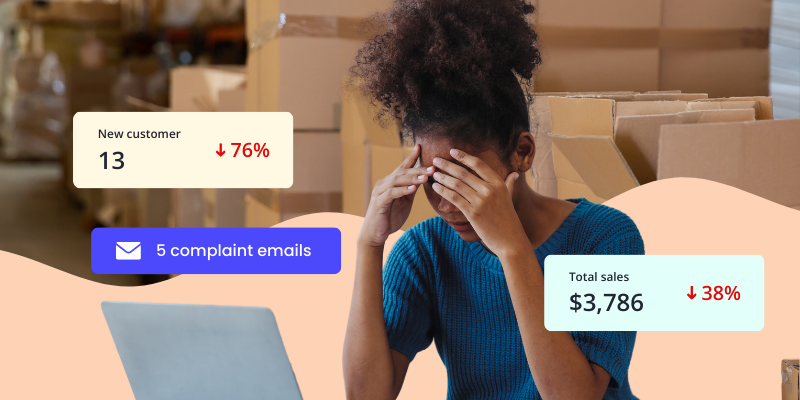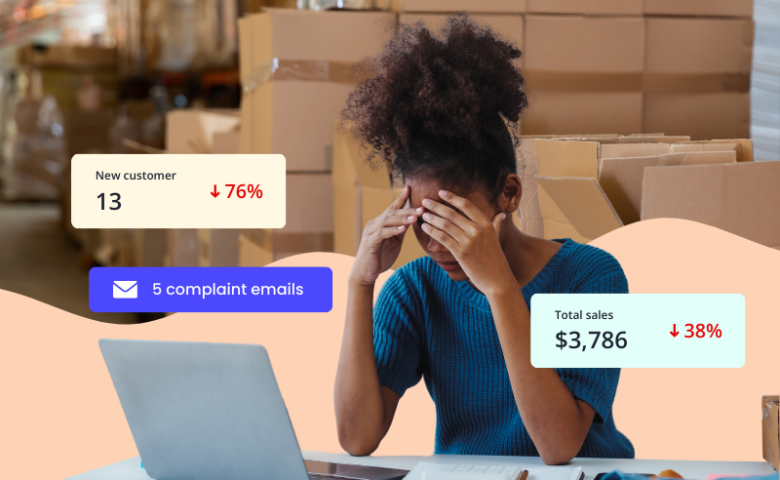

No Customer Service Will Kill Your Business – Here’s Why
Much emphasis is placed on customer service in today’s modern business world. Retail customers expect it, restaurant-goers demand it, and business owners are privileged to provide it, but how does the conversation change when the topic shifts from brick-and-mortar retail to digital commerce?
Customer service is often thought of as a reactive, post-sales engagement focused primarily on customer retention instead of customer acquisition. If you have great after-sales support, you’ll garner a lot of brand loyalty and, consequentially, a lot of return sales.
Traditionally, this line of thinking has been the modus operandi for almost all modern businesses. Still, as more and more organizations undergo digital transformations to upload their stores online, this model of thinking is slowly falling out of vogue.
Customer Service in the Digital Age - How Does Customer Service Affect Sales?

Happy customers buy more, more often, and repeatedly. A happy customer is a returning customer. In a world where acquiring a new customer costs anywhere from five to twenty-five times more than retaining an existing one, it’s good business to try your best to keep the ones you have around for a long time.
Engaging and ensuring that customers are happy, satisfied, and well-taken care of in a retail environment is relatively simple. Engagement on the sales floor to field questions and provide timely answers to product questions is often enough to garner customer favour.
The results from the investment are apparent enough – 86% of customers in 2020 are willing to pay more for a better customer experience, but how well does this strategy translate into a digital environment?
The answer? Not very.
If customers can’t find what they’re looking for, they’ll simply leave. Imagine you walked into a store, and nobody bothered to help you; how would the business be able to recommend other product syles, colours and variations or get you to purchase a product that you didn’t know you needed?
Well, that’s exactly what’s happening in today’s digital store.
If a customer goes into a store and can’t find what they’re looking for, they won’t stick around longer than they have to. The same principle applies to online shoppers. With virtually limitless options available at their fingertips, online shoppers can find an alternative and make a purchase in seconds.
More and more organizations are converting their stores to operate online, and many more are even beginning to implement an omnichannel marketing strategy. Still, many are failing to incorporate the very principles that led them to success in the first place – good customer service.
Here’s how bad customer service, or a lack of it, will kill your online business.
Poor Customer Service is Expensive
Creating an excellent customer service strategy, onboarding experienced support agents and providing compensation for negative experiences is expensive, but it’s still cheaper than poor customer service, especially in the long run.
The most famous example of a costly negative customer experience is the one between David Carroll and United Airlines.
Caroll, a musician, was flying with his band on United Airlines when an employee broke his guitar. After the airline refused to admit their mistake and compensate Caroll for the damages, David retaliated by writing a song berating United Airlines for their poor experience using his broken guitar as a prop.
Caroll uploaded his music video onto YouTube on July 6, 2009. Within one day, it had amassed 150,000 views, which led to United Airlines contacting Caroll hoping to rectify the situation. IN August of the same year, the video had already obtained 5 million views.
Four weeks after the video was posted online, the stock price for United Airlines fell by 10%, costing shareholders a collective USD 180 million in lost value.
Challenging Customer Acquisition
Social proof has always been the most impactful and trustworthy form of marketing in marketing. Earned media always has and will always trump paid media. Some reports even state that more than 90% of customers believe reviews, testimonials and personal anecdotes over traditional advertising efforts.
However, social proof is a two-way street.
A presentation from Esteban Kolsky, the Chief Evangelist of SAP, shares that while 72% of satisfied customers share their positive customer experiences with six or more people, 13% of dissatisfied customers will share their negative customer experiences with 15 or more people.
Another study reports that 54% of survey respondents shared their negative experiences online, while only 33% of respondents shared their positive experiences.
Everything is forever on the internet, and depending on where your customers are on their customer journey, they may just snub their nose at you during the discovery phase before they even get a chance to look at your products.
Increased Customer Churn
Customers, even the most loyal ones, don’t stick around forever.
Maximizing a customer’s lifetime value is a continuous process, and one misstep can turn months or even years of effort to waste. In a report from PwC on the future of Customer Experience, the consulting group discovered that even when consumers have a positive attitude towards a brand, more than 30% will leave after just one bad experience.
According to Forbes, bad customer service is costing companies over $60 billion USD a year. In today’s digital-first world where, again, customers have virtually limitless options, loyalty to one company simply isn’t worth it. If an organization can’t be bothered to go the distance to take care of their customers, customers can and will look for one that does.
Customer Service - The New Frontier for Marketing
When customer service is relegated to the backburner, it shows, especially in an organization’s balance sheets.
Contributing to lost sales, more difficult customer acquisition efforts, and increased customer churn, poor online customer service is likely to end up more expensive than implementing a strategy that provides a good one.
When you walk into a retail store, a salesperson might ask what you’re looking for. They might start with your size and recommend you some other styles you might like. They might tell you about their Buy One Get One Half Off promotion.
Can’t find a pair of shoes? Not a problem, how about a tracksuit, instead? Oh, by the way, it’s 60% off until Friday, so it’s prime time to hop on the deal now!
Now imagine going into a store where they knew shoe size, how often you purchase, how much you generally spend, and your general style. With one look, a salesperson will be able to provide recommendations for products that you didn’t even know you wanted at prices that you can’t believe.
The experience is so great that you rave to your friends about it, and they decide to join you for your next excursion. Even if the prices are slightly higher than the competition, you don’t mind paying the surcharge because the experience is just that incredible, a sentiment shared by 86% of consumers in 2020.
On the business side of things, not only will your customers be impressed, but truly understanding your customers allows you to create a more personal and memorable shopping experience that will ultimately lead to longer customer retention, increased customer lifetime value and reduced customer churn.
Such experiences are typical in high-end brick-and-mortar retail environments that emphasize personalization and experience, but how can this be recreated at scale in an eCommerce setting?
We don’t know if or how the competition is doing it, but we’re helping companies offer the best customer service by providing them with a smarter way to connect with Chatso, our AI-assisted live chatbot.
Featuring AI-built customer profiles that know your customers better than they do, a real-time recommendations engine, and customer purchasing behaviour and analytics, Chatso can help you stay multiple steps ahead of your competitors by saving you money and keeping it coming.
Sign up for a free trial today to convert more leads, close more sales and provide a customer service experience worthy of sharing.
Related articles

Brand Trust is Your Most Important Asset – Here’s 3 Ways to Build Yours
Brand trust is more critical in today’s business landscape than ever before. As consumers adapt their shopping habits and purchasing behaviours in the wake of the

Can You Automate Customer Service?
Companies utilize automated customer service to improve agents’ performance. It aims to help users avoid long live interactions. It protects businesses from excessive volumes and accelerates
Request a demo

Thank you for requesting a demo!
We will be in touch with you very shortly!
